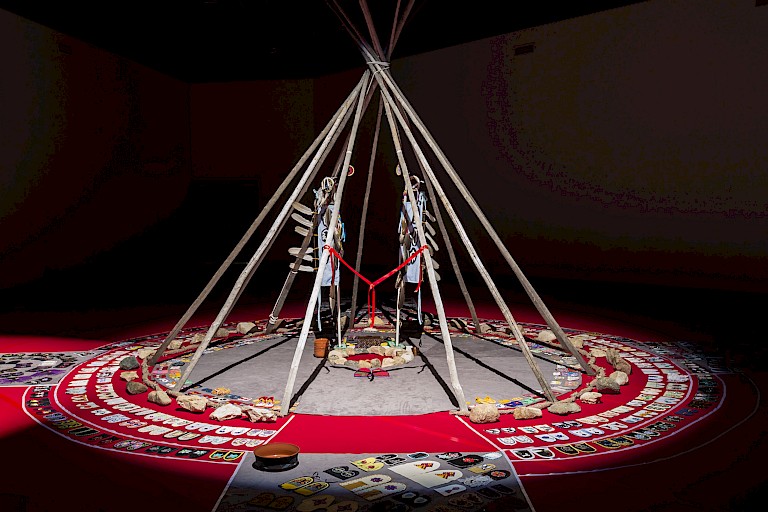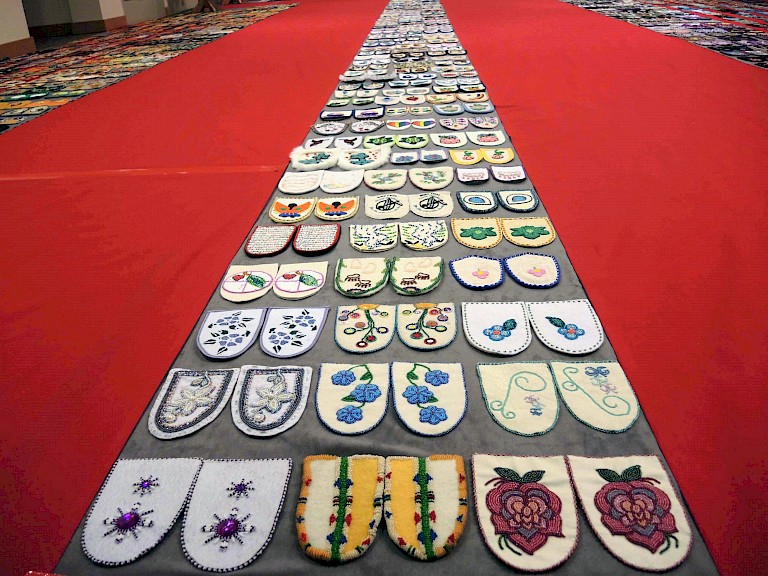



Designed from the outset to travel, each stop takes months of preparation, overseen by an organizing committee on the ground and supported by national advisors. Elders are central to the process and are consulted to ensure that local traditional protocols are followed so that the host site can be transformed into a sacred space for the duration of the installation. Opening ceremonies incorporate a range of practices from smudging through the burning of cedar or sage to songs, pipe ceremonies, and community gathering. Forging partnerships with hosts is key, both for creating a sacred space and for actively welcoming visitors—turning what may be perceived as a sterile and uninviting gallery into a community space.
In addition to honoring missing and murdered women and creating a place for grieving loved ones to gather and mourn, each community organizes events to raise awareness, facilitate conversations, and expand involvement. Inclusivity is at the center of the project, guided by core principles: everyone is treated with kindness and gentleness; everyone is welcome—the space is non-partisan and non-political; everyone is a human being first—all affiliations and statuses are left at the door. The project has been completely organized by volunteers and no funding is accepted from resource extraction industries or government entities.
Over 46,000 people have visited Walking With Our Sisters since its first installation in 2013, and it will visit 30 communities before completing its journey in 2019. This project adds an important voice to grassroots efforts that have been underway for decades and in recent years have begun to gain more traction. In May 2014, the Royal Canadian Mounted Police released a study covering the past 30 years alone that revealed a list of 1,186 cases of missing or murdered Indigenous women. This report was recently followed in 2015 by announcements from Prime Minister Justin Trudeau that the government will launch an inquiry into the issue. While this acknowledgement has increased visibility, as Belcourt notes, “There are things they can do right now that don’t require an inquiry and there are things that the inquiry can’t achieve.”
For its part, as Walking With Our Sisters traverses the country, it creates sacred spaces for honoring and remembering, as well as new connections of engaged organizers whose work continues to build momentum.



